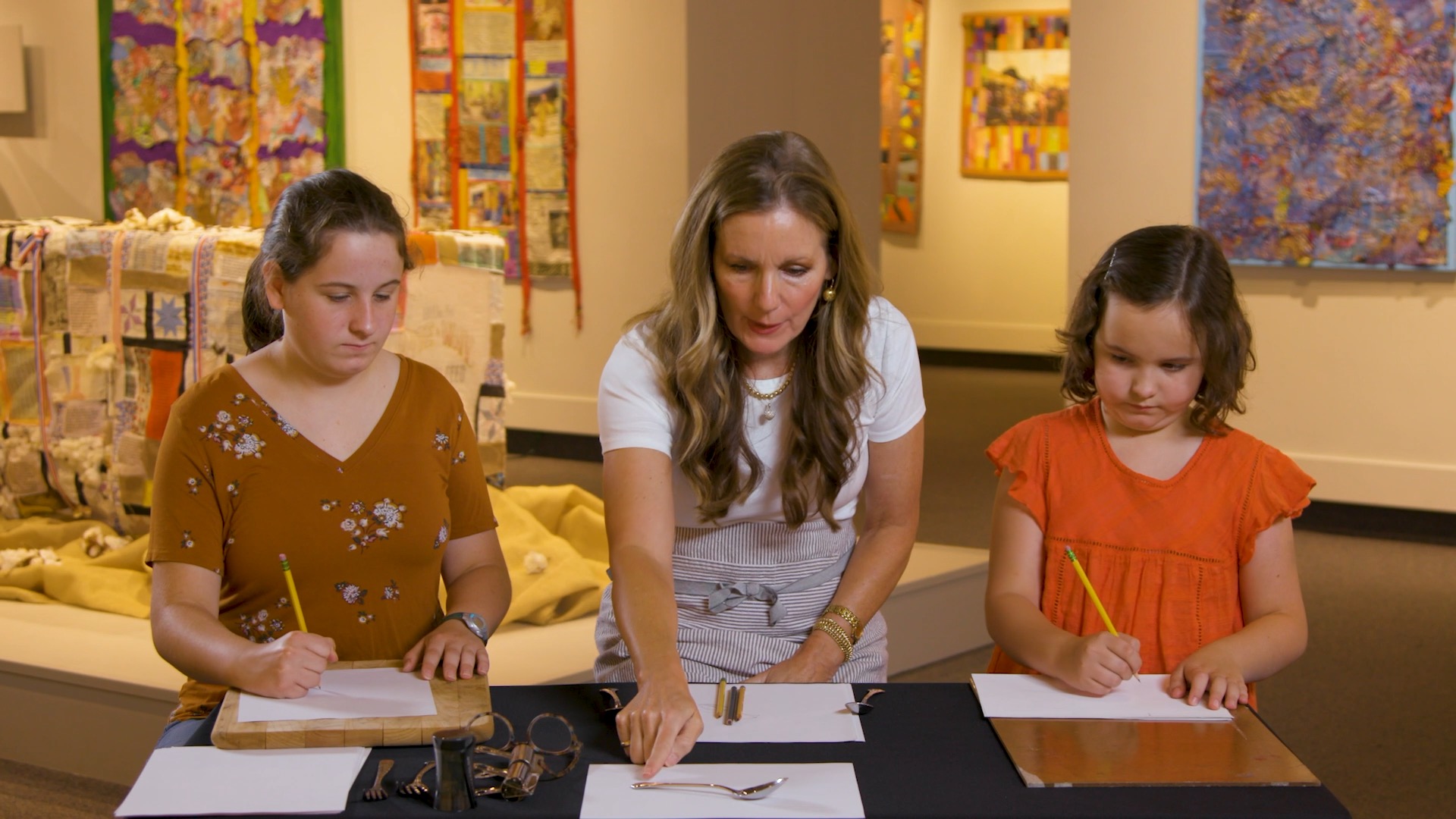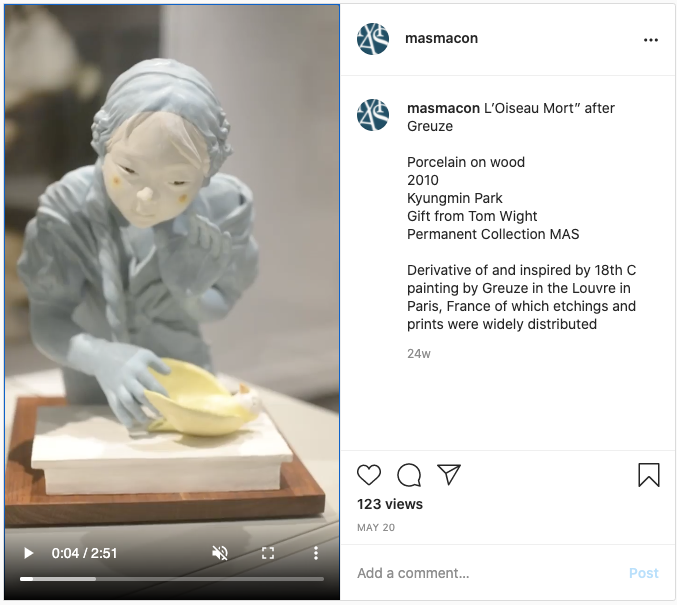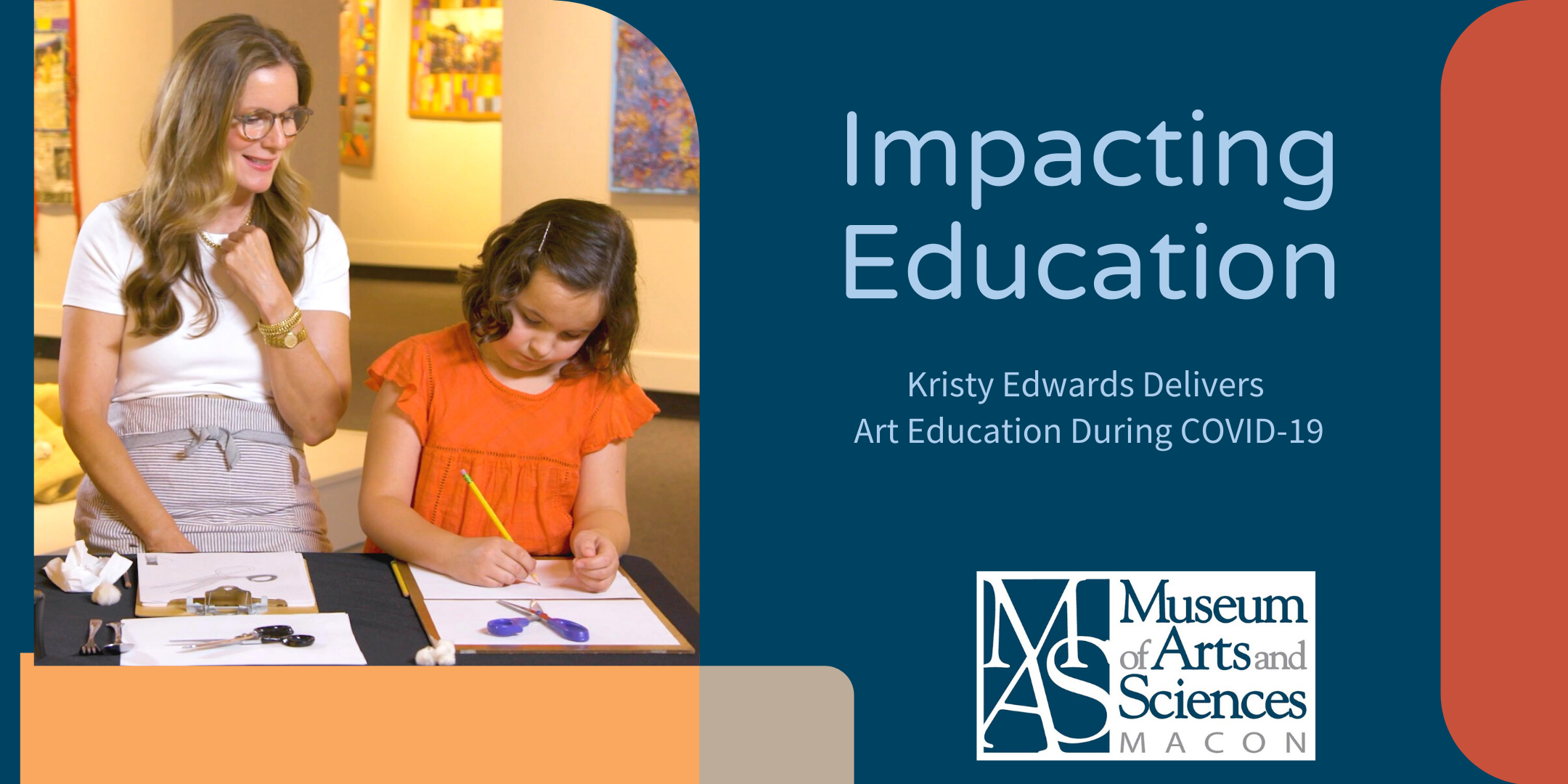
By Christopher Collier, Guest Writer for the MAS
Kristy Edwards, MAS Curator of Art, joined the Museum of Arts and Sciences earlier this spring with the mission of guiding Central Georgians towards the discovery, understanding, and appreciation of art. Edwards’ journey began at the onset of the COVID-19 pandemic, but she wasn’t going to let a state-wide shutdown halt her calling.
The museum’s eighth annual Emerging National exhibition was her first challenge. The event, which showcases rising professional artists from around the United States, began on February 21. Just three weeks later, on March 13, the Museum of Arts and Sciences shuttered its doors indefinitely. Large-scale abstract paintings were hung, mixed-media installations were displayed, and ceramic sculptures were arranged. The museum’s galleries were packed with art but devoid of conversation and engagement. The pandemic had walled off the museum from its community, but Edwards was determined to deliver discovery and wonderment to Central Georgia, no matter the distance.
Edwards’ solution was found through technology. Equipped with Instagram Live, she broadcasted live conversations with each emerging artist featured in the annual exhibition. Edwards said the conversations could teach us about more than just art. 
“To remember that there is a human being on the other side of every single piece of art,” Edwards said. “It’s not manufactured, [and] it’s not industrial. It’s made from a human hand and a human brain and heart. It’s pretty amazing. These interviews drive that home—you really can’t miss that.”
The pandemic raged throughout the summer, but Edwards continued to innovate and deliver the MAS’ art collection to the public in unique ways. The month of May saw the introduction of Reflections on Our Collection, a weekly blog dedicated to delivering art education from afar.
Weaving poetry, music, and regional artists into an artistic narrative, Edwards has produced a total of 17 blog posts centered around art. Several members of the community have stopped Edwards out of admiration and appreciation for her blog. The exchanges have made an impact on her approach.
“I think it’s going to influence the choices I make,” Edwards said. “For example, I keep hearing our community prefers realism over abstract art. Instead of me pulling realism all the time, it really makes me know that that’s where the learning needs to be done. The growth can be done in the exposing people to— maybe they don’t prefer it because they don’t understand it. So I feel like that’s the place they need me the most. They need somebody to help Interpret what they don’t understand.”
Edwards said she understands the challenges that accompany abstract art.
“I’m a realist painter, so I get it—abstraction can make you very uncomfortable,” Edwards said. “It’s hard to verbalize what is subconscious and abstract because it’s wordless, it’s pictureless, [and] it’s imageless. There’s the challenge—to blog about that. Now I have to put back what the artist intentionally didn’t put into concreteness [and] I have to pull back and put into it concreteness. So there’s the challenge.”
Edwards aims to push the community towards the creation of art, too. As part of MAS’ Virtual Field Trip experience, she produced two 20-minute art lessons with Big Hair Productions. Incorporating Betty Edwards’ book, “Drawing on the Right Side of the Brain,” Edwards ties art and science together to further the MAS’ educational mission.
“These first two drawing lessons are teaching the student how to see and the importance of looking at the object that you’re drawing,” Edwards said. “We’re learning the line that describes the object, which is called the contour, so that’s the first [lesson]. And the second [lesson] takes them through some very rudimentary value work, which is shading. It’s in that magic how you can show light and shadow; it’s in that magic that causes the illusion of 3D.”
Due to COVID-19 and its alteration of society, crowds at the Museum of Sciences are a bit lighter these days. But the desire to discover, understand and appreciate art remains.
“People are coming with openness,” Edwards said. “They’re coming with a need [and] a desire to do something interesting. They’ve been changed by [COVID-19], and they’re coming out to feel better.”


